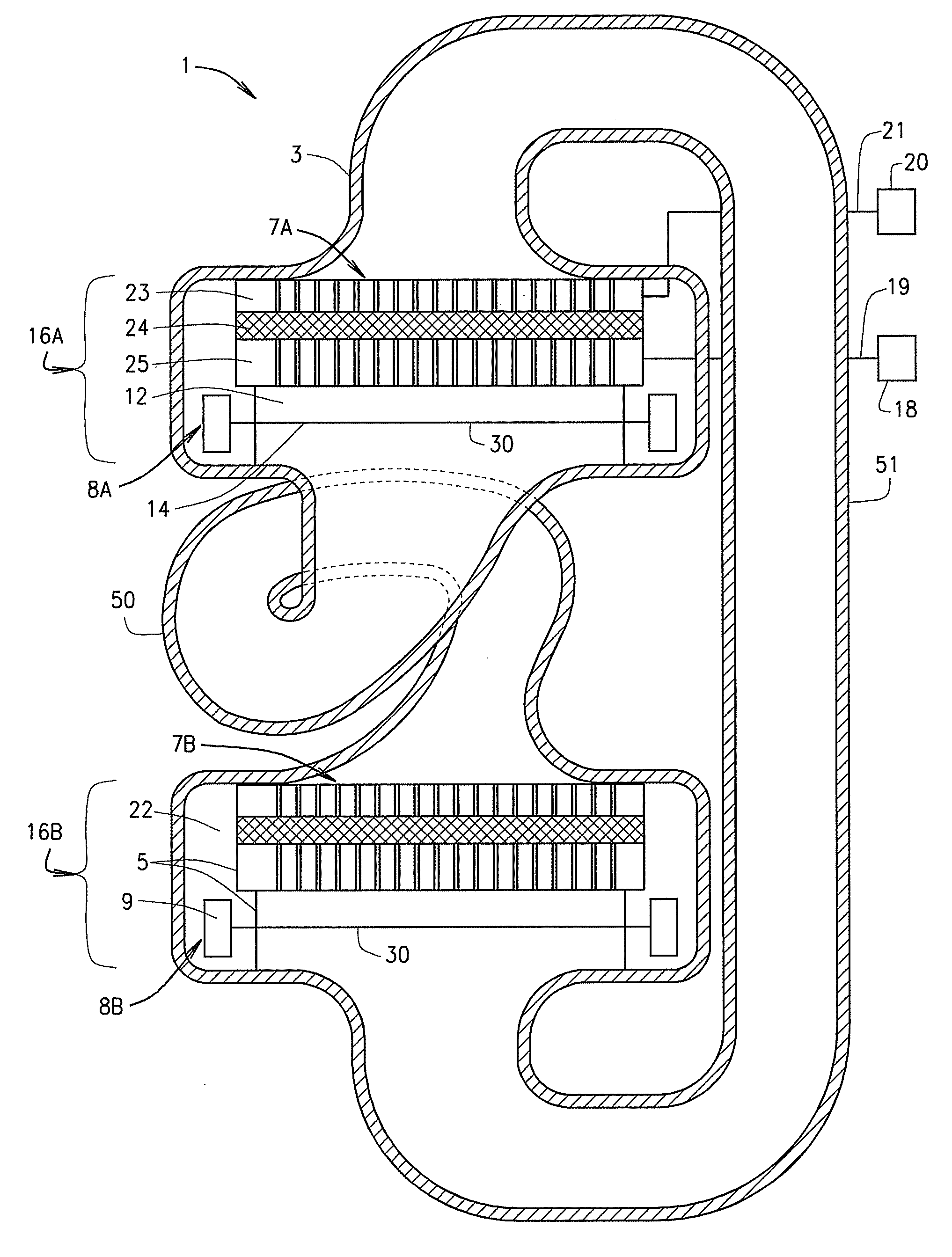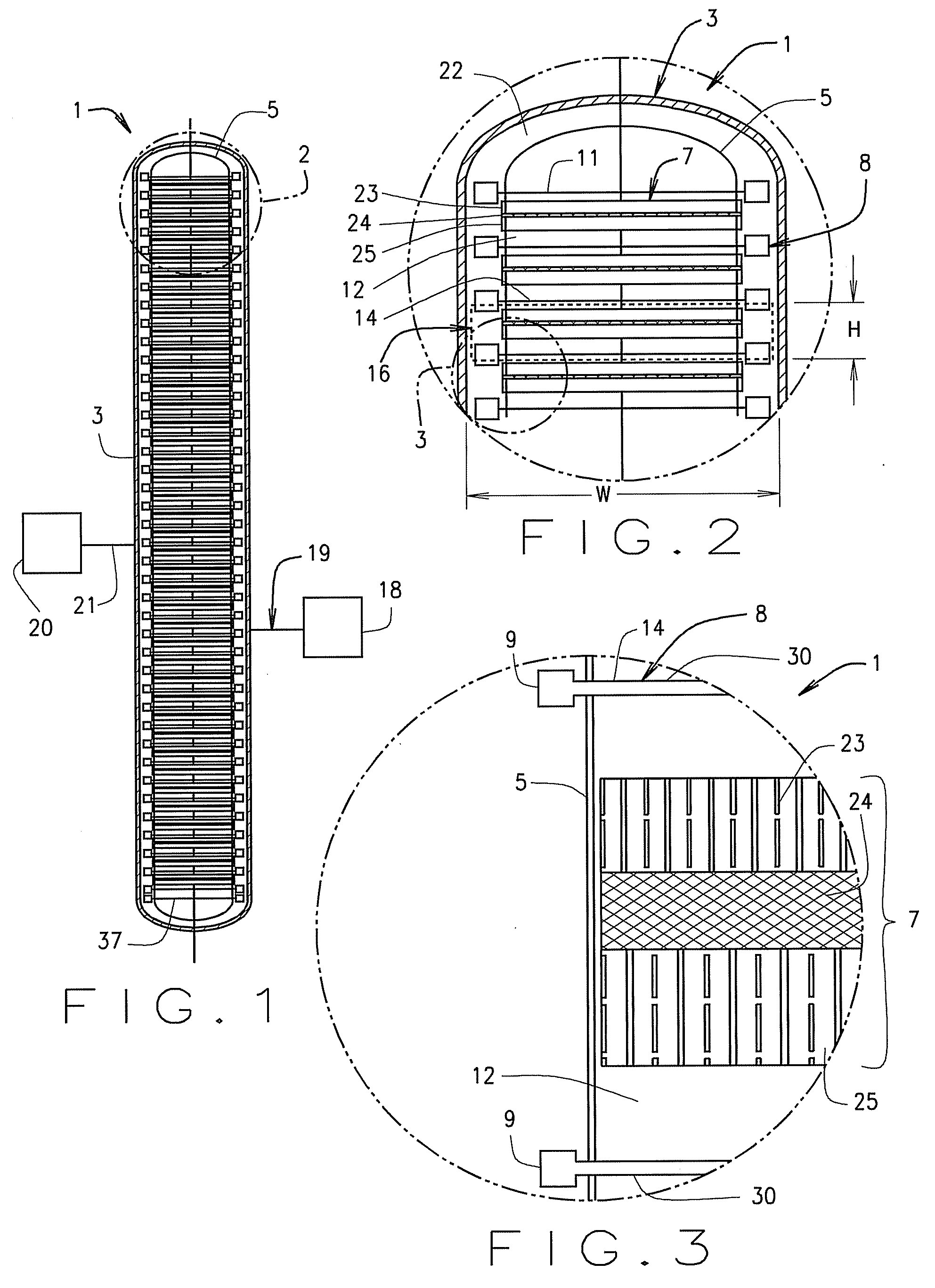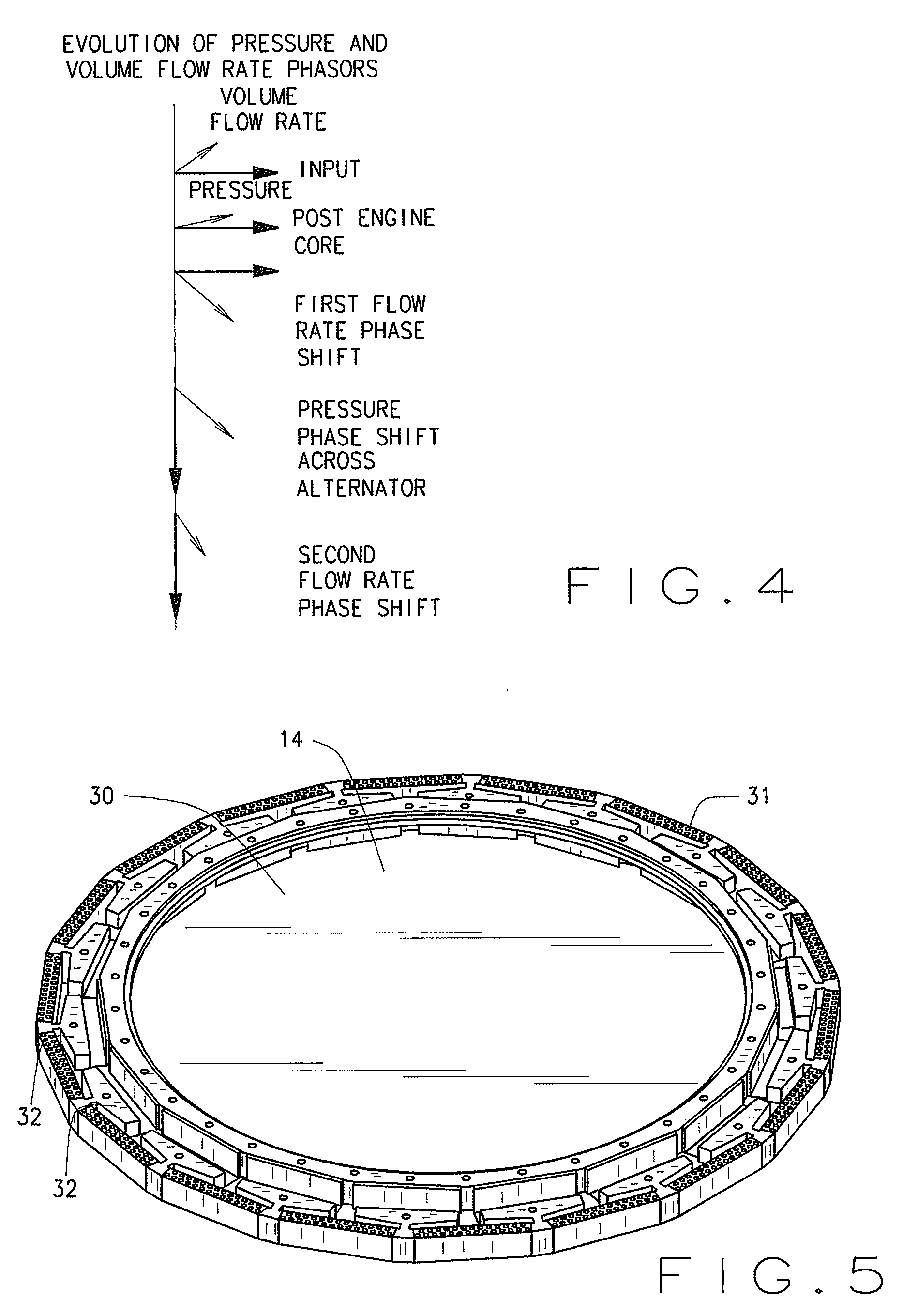In-line stirling energy system
- Summary
- Abstract
- Description
- Claims
- Application Information
AI Technical Summary
Benefits of technology
Problems solved by technology
Method used
Image
Examples
Embodiment Construction
[0021]FIG. 1 illustrates one embodiment of the present invention. The reference numeral 1 designates generally a Stirling engine system comprising an external pressure vessel or housing 3. Inside the pressure vessel 3 is an acoustic shell 5 containing a plurality of Stirling engines each designated generally 7 and coupled to a respective energy conversion device 8 such as an alternator device designated generally 9. A launching or starting device such as a launching compressor 11 is provided which initiates the propagation of an acoustic wave at the desired frequency through the various Stirling engines 7. The Stirling engines 7 preferably operate at a frequency in the range of between about 40 Hz and about 1000 Hz. Each alternator 9 includes a driven element 14. Between each Stirling engine 7 and respective energy conversion device 8 is a thermal zone 12 to thermally isolate, e.g., a work conversion device such as a driven element 14, from a respective Stirling engine 7. An engine ...
PUM
 Login to view more
Login to view more Abstract
Description
Claims
Application Information
 Login to view more
Login to view more - R&D Engineer
- R&D Manager
- IP Professional
- Industry Leading Data Capabilities
- Powerful AI technology
- Patent DNA Extraction
Browse by: Latest US Patents, China's latest patents, Technical Efficacy Thesaurus, Application Domain, Technology Topic.
© 2024 PatSnap. All rights reserved.Legal|Privacy policy|Modern Slavery Act Transparency Statement|Sitemap



